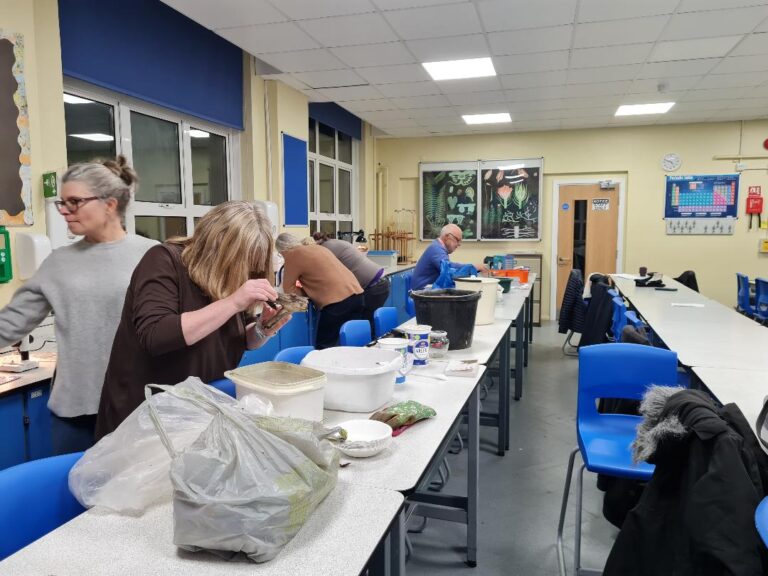Life under the Microscope with Seaford Natural History Society. Something different for a Friday night out!
Our weekend programme of activities completed its first year with a laboratory session at Seaford Head School. We had planned this indoor session over a year ago thinking that the weather in November was likely to be grim and being inside would have been welcome. In the event the weather was glorious and we could easily have had a delightful winter walk!
Instead we attempted to find, observe and identify a variety of invertebrates using binocular microscopes and hand lenses. The specimens were collected from leaf litter, garden ponds and pitfall traps.
Some of the group had never used a microscope before and were fascinated to see the invertebrates in detail. Something that looked like a speck of dirt would suddenly turn out to be a tiny creature with legs and antennae. The large Dragonfly nymph looked like a monster under the microscopes, whilst the gut, heart and appendages of the tiny crustaceans could clearly be seen.
We investigated leaf litter from several different sources including Oak and Beech and subjectively the Oak leaf litter appeared to be the most productive. In general, we found large numbers of woodlice and springtails, but also centipedes, millipedes, tiny beetles and various very small invertebrates that we could either not catch or not identify. To the naked eye the centipedes and millipedes looked like tiny pieces of fine cotton and it was only their movement that gave them away. Under the microscope we were able to see detail down to pair of legs on each segment of a millipedes body. Equally interesting was how fast many of the little creatures moved, making it very difficult for us to get a fix on them under the microscope. On the other hand, slugs were easy to observe!
Pond water revealed pond shrimps, water lice, dragonfly and damselfly nymphs, innumerable fly larvae, the usual cast of dozens of minute crustacea – even a Flatworm.
We were agreeably surprised by so much activity in pondlife “low” season.
For those who had not previously used microscopes, this was a wonderful chance to do something new. At least one of our group decided to buy their own microscope as a consequence.
In addition to the traditional methods of examining minute creatures we also experimented with the cameras on our phones and using a micro lens attachment. We were impressed with what modern technology can do. (See photo above). Our thanks go to the school for allowing us to use their labs and equipment in “out of school” hours. We hope to return next November, with cells and microscopic life on the agenda.
Thanks too to Seaford Action for Nature/Ouse Valley Climate Action fund for funding the equipment.
Mike Vingoe and Marion Trew.






